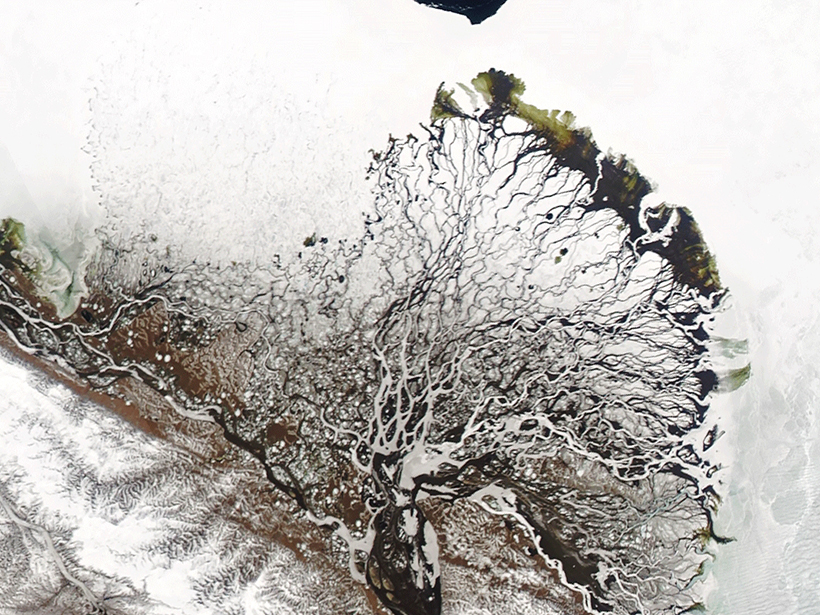Source: Journal of Geophysical Research: Earth Surface
The Arctic Ocean is the smallest of the world’s oceans, but it receives a surprisingly large percentage of the world’s river water. Rivers thus have a disproportionate effect on Arctic Ocean characteristics, especially near its shores. The deltas at the ends of these rivers modify and filter flows of water, sediment, nutrients, and heat. Few detailed studies of Arctic river deltas have been done, however.
Piliouras and Rowland help fill that gap by analyzing Landsat 8 satellite imagery to study the deltas of six Arctic river systems of various sizes: Colville, Kolyma, Lena, Mackenzie, Yenisei, and Yukon.
The scientists observed that delta structure affects the amount of river water that pours into the ocean as well as when it reaches the ocean. For example, a delta with many lakes and interconnecting branches retains river water longer, temporarily storing seasonal floodwaters and allowing entrained sediment and nutrients to settle inland. The Mackenzie River delta in Canada has enough lakes in its system to store 16% of its spring flood volume.
A delta’s structure is largely determined by its surroundings. Preexisting landforms may restrict the size of a delta or the paths of its channels, and ocean tides may carve out existing channels. For example, a large island at the end of the Lena River delta in Russia predates the delta itself and affects the splay of its branches.
Ice cover, a distinctive characteristic of Arctic deltas, tends to preserve uneven arrays of channels by freezing small channels in place and preventing them from filling with sediment. At the same time, ice melts fastest over larger channels while it still plugs the small ones. Large channels therefore carry the bulk of spring floodwater, which may carve them even deeper and wider.
Smaller deltas tend to have more uniformly sized channels; regardless of delta size, though, rivers dump their water in concentrated areas along the Arctic coast, leading to focused deliveries of fresh water, sediment, nutrient, and heat to the coastal ocean.
As the climate warms, thawing permafrost will open more routes of interconnectivity in Arctic deltas. Sea level rise will amplify marine and tidal influences, and ice cover will diminish. More studies of Arctic river deltas, especially in comparison with deltas in warmer regions, will help predict how these changes might affect the Arctic Ocean at large and will create a fuller picture of the interactions between rivers and the oceans they feed. (Journal of Geophysical Research: Earth Surface, https://doi.org/10.1029/2019JF005250, 2020)
—Elizabeth Thompson, Freelance Writer
Citation:
Thompson, E. (2020), River deltas at the top of the world, Eos, 101, https://doi.org/10.1029/2020EO141604. Published on 20 March 2020.
Text © 2020. AGU. CC BY-NC-ND 3.0
Except where otherwise noted, images are subject to copyright. Any reuse without express permission from the copyright owner is prohibited.

